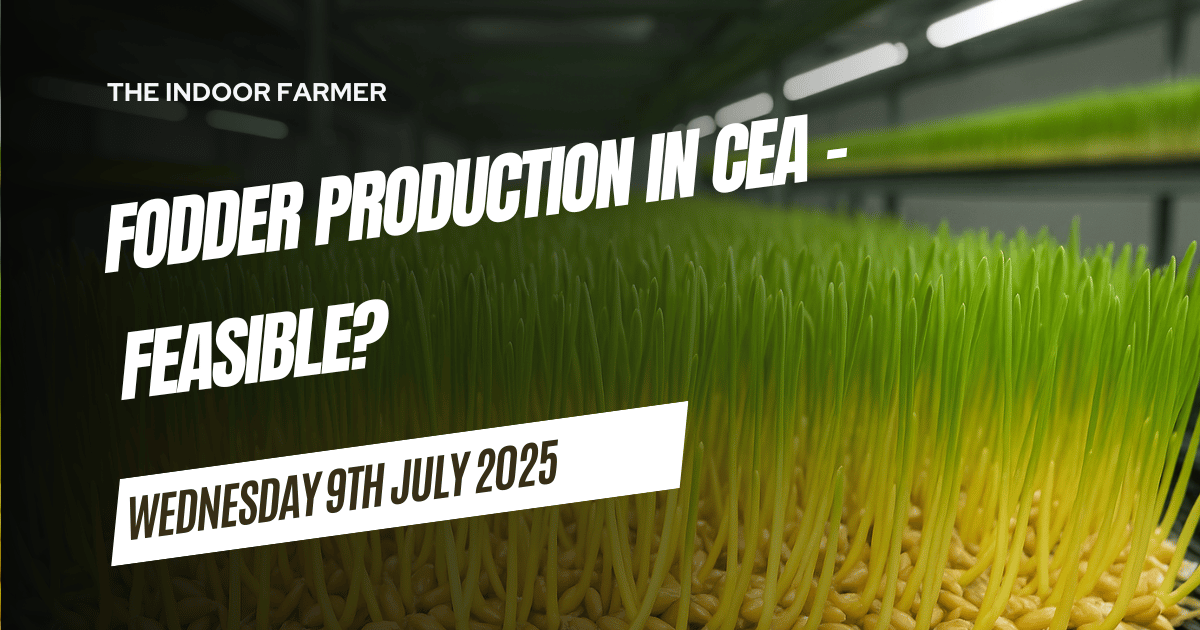- The Indoor Farmer
- Posts
- Fodder Production in CEA - FEASIBLE?
Fodder Production in CEA - FEASIBLE?
Examining the controlled-environment potential of vertical farms for fodder systems, from agronomic fundamentals to economic feasibility

The Promise vs. The Reality Check
Vertical farming offers several compelling advantages over conventional outdoor fodder production:
Resource Efficiency: Vertical farms use less water, nutrients and land than traditional agriculture, making them especially attractive in water-scarce or urban areas.
Year-Round Production: Controlled environments eliminate the risks of drought, storms, and seasonal fluctuations, ensuring a steady supply of fresh fodder regardless of external conditions.
Reduced Chemical Use: Indoor systems virtually eliminate the need for pesticides and herbicides, improving feed safety and reducing environmental pollution.
Locality: Fodder can be produced close to livestock operations, reducing transport costs and spoilage, and supporting local food systems.
Increased Production: Substituting fresh fodder for ruminants ’ diets has shown improved digestibility, increased bioavailability of feed intake, and increased productivity and dairy production.
Despite these advantages, the journey to widespread, profitable vertical fodder production is fraught with challenges:
High Energy Demands: Lighting and climate control are energy-intensive, especially for fast-growing fodder crops. While advances in LED technology and renewable integration are helping (and lights are less needed in these short production cycles), energy remains a major cost driver.
Capital and Operating Costs: Building and maintaining vertical farms requires significant investment in infrastructure, automation, and skilled labor. Many tech providers have failed due to underestimating these ongoing costs while overengineering technologies.
Profitability and Scale: Fodder is a low-margin, high-volume commodity. Competing with field-grown feed is tough, especially when outdoor systems benefit from established supply chains and agricultural subsidies.
Market and Policy Alignment: Most government incentives and subsidies still favor traditional agriculture, putting vertical fodder farms at a competitive disadvantage.
Management: Yield and nutrient content depend on seed variety, environmental conditions (light, water, pH, temperature), and management. High water content can make hydroponic fodder susceptible to mold and reduces dry matter intake compared to dry feeds. Issues such as mold risk, nutrient management, and energy use need ongoing research and optimization.
Production consistency comes down to strict environmental control—particularly humidity and temperature.
Additionally, we rely on third-party digital seed inspection technology, which is essential for detection like aflatoxins. This helps us prevent cross-contamination and maintain high-quality standards in our indoor growing fodders. 100% safe.
📥 Want to access the full editorial?
Subscribe to The Indoor Farmer for expert-only analysis, feasibility studies, and commercial trends in vertical and high-tech greenhouse farming.
Disclaimer:
This article is for informational purposes only and does not constitute investment or business advice. Readers are encouraged to conduct their own due diligence and consult with experts before making operational or financial decisions.
Reply